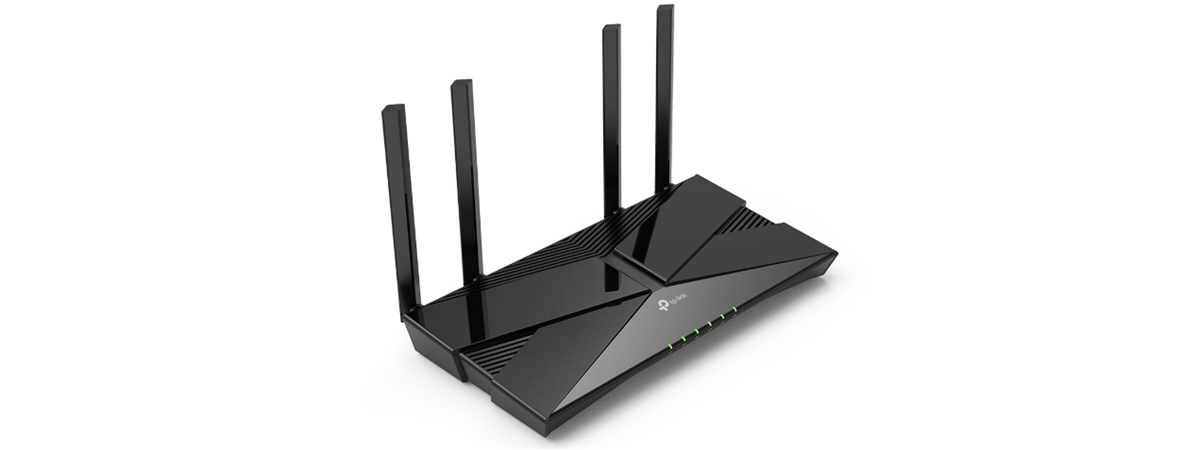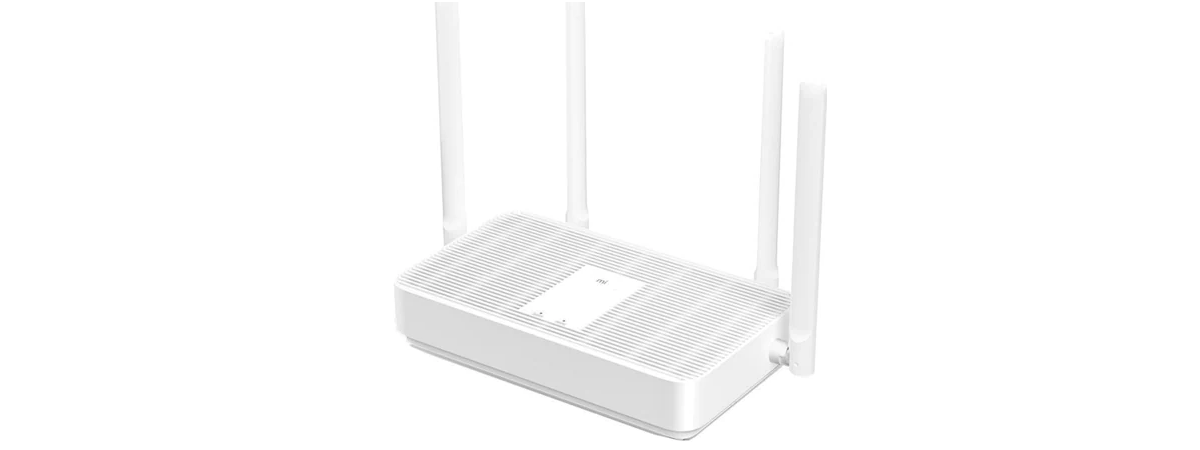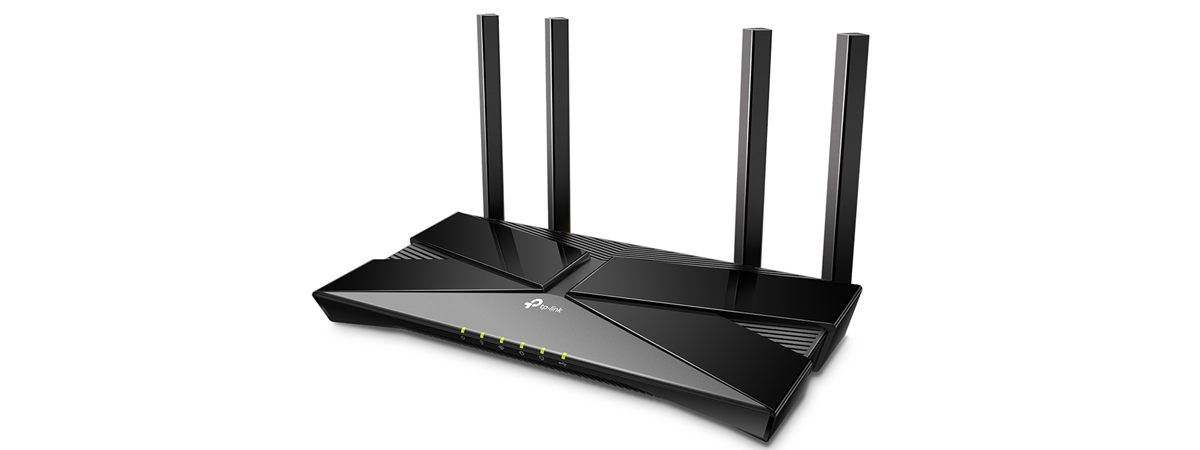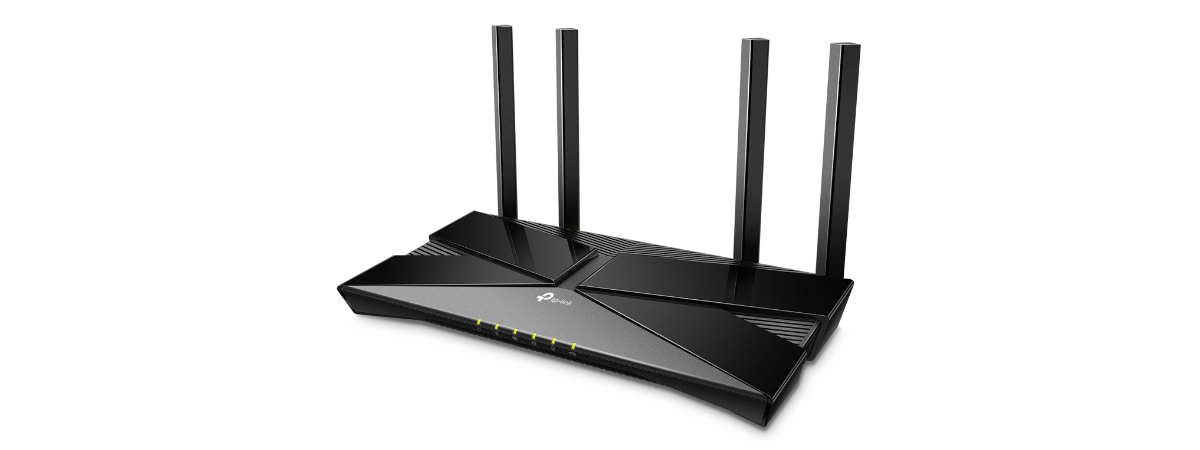
Wireless network performance
First, let’s look at the apartment used in our testing and how it is set up. TP-Link Archer AX20 is placed in the living room. With most wireless routers, the signal strength is not great in places like the Kitchen and the Medium balcony.
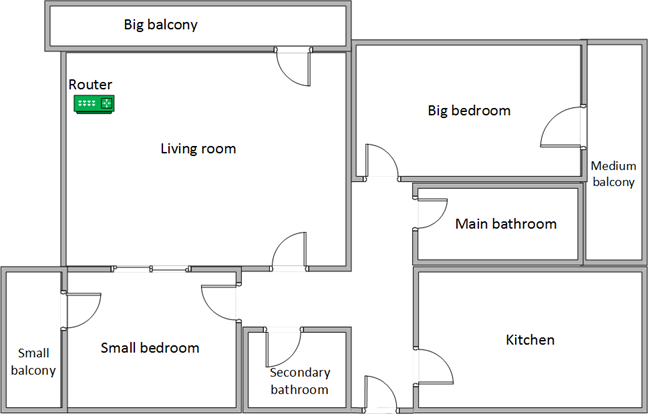
The apartment in which we tested TP-Link Archer AX20
Our testing was done using a fast 1 Gigabit Internet connection capable of uploads on the internet of up to 800 Mbps. We evaluated the Wi-Fi emitted by TP-Link Archer AX20 using the following standards: Wi-Fi 4 on the 2.4 GHz band, Wi-Fi 5, and Wi-Fi 6 on the 5 GHz band.
To get a better idea of the performance offered by TP-Link Archer AX20 (AX1800), we compared it with ASUS RT-AX58U and its more affordable brother TP-Link Archer AX10. We analyzed the 2.4 GHz band first when using the Wi-Fi 4 standard, and we measured the signal strength with NetSpot. You can see its evolution in the graphic below.
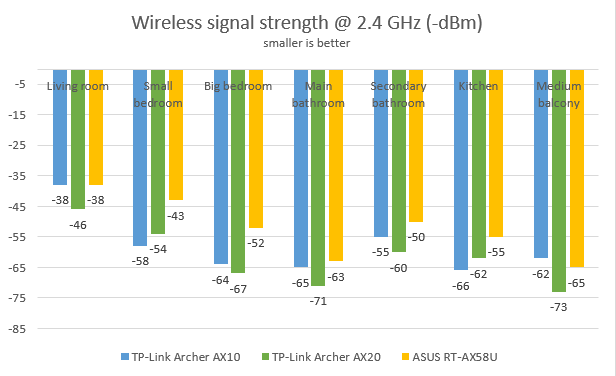
TP-Link Archer AX20 - Signal strength on the 2.4 GHz band
Then, we wanted to see how fast the internet connection is when using the Wi-Fi 4 standard. We used SpeedTest on our laptop and made several measurements in each room. TP-Link Archer AX20 offered download speeds that were faster than those of an Archer AX10.
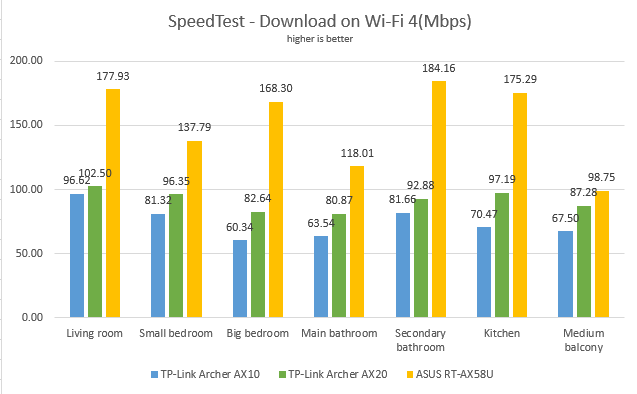
TP-Link Archer AX20 - Downloads in SpeedTest with Wi-Fi 4
When measuring the upload speed, the story wasn’t as clear cut, but TP-Link Archer AX20 performed well in all rooms.
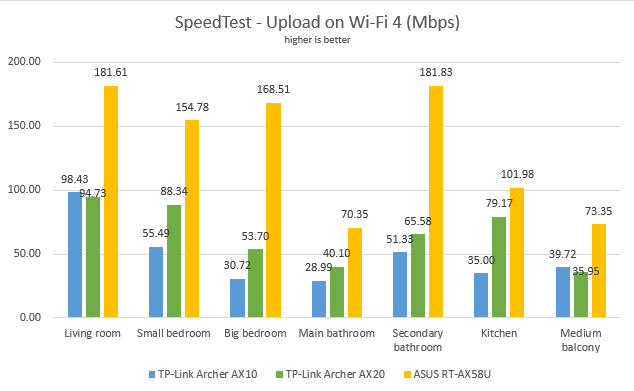
TP-Link Archer AX20 - Uploads in SpeedTest with Wi-Fi 4
We used the PassMark Performance test to transfer data between two computers connected to the network on the 2.4 GHz band when using Wi-Fi 4. Again, TP-Link Archer AX20 offered faster downloads than Archer AX10.
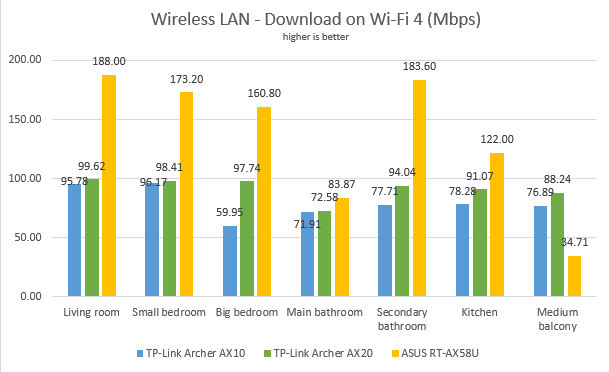
TP-Link Archer AX20 - Downloads when using Wi-Fi 4
There was no clear winner when measuring the upload speed, as each router’s performance varied greatly from room to room.
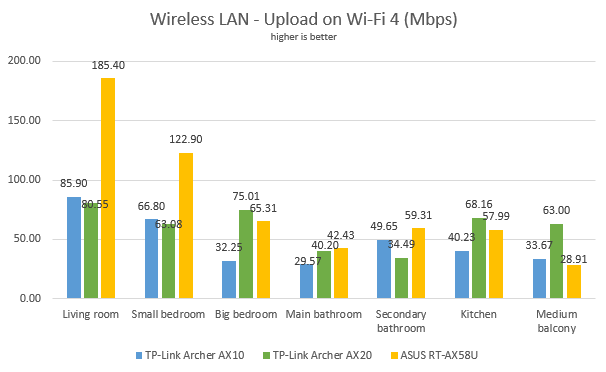
TP-Link Archer AX20 - Uploads when using Wi-Fi 4
On the 2.4 GHz band, when using the Wi-Fi 4 standard, TP-Link Archer AX20 delivers faster downloads than its smaller brother - Archer AX10.
We analyzed the 5GHz wireless band using the Wi-Fi 5 and Wi-Fi 6 standards for the next set of measurements. We looked at the evolution of the signal strength from room to room. As you can see below, the signal strength offered by TP-Link Archer AX20 was better than that provided by Archer AX10 in most rooms.
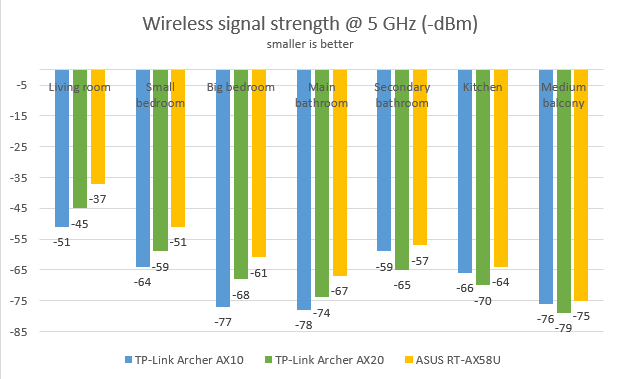
TP-Link Archer AX20 - Signal strength on the 5 GHz band
We used SpeedTest to measure the speed of the internet connection when connected to the 5 GHz band when using the Wi-Fi 5 standard. TP-Link Archer AX20 delivered excellent download speeds in most rooms.
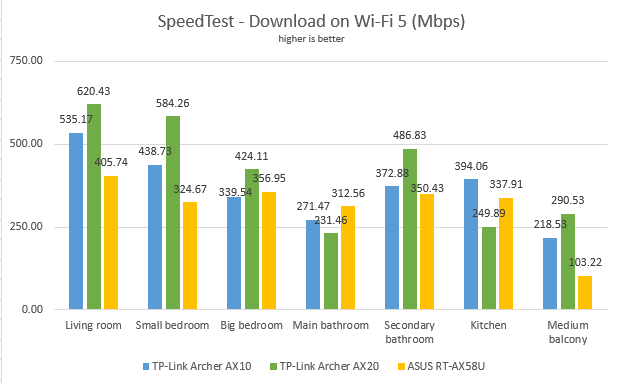
TP-Link Archer AX20 - Downloads in SpeedTest with Wi-Fi 5
The same was true when measuring the upload speed.
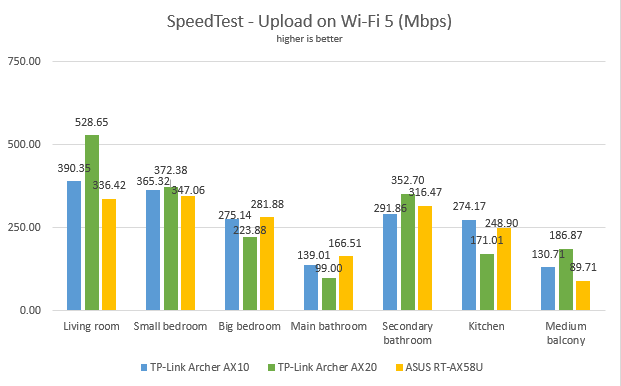
TP-Link Archer AX20 - Uploads in SpeedTest with Wi-Fi 5
We then used the PassMark Performance test to transfer data between two computers connected to the network using Wi-Fi 5. In this test, TP-Link Archer AX20 performed well, without being the best router in our comparison. As you can see below, there was no clear winner.
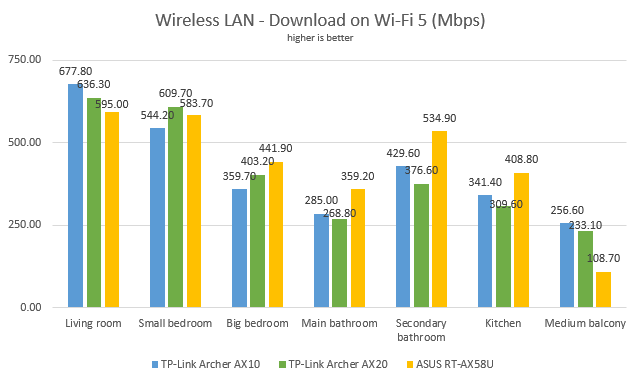
TP-Link Archer AX20 - Downloads when using Wi-Fi 5
The same happened with the upload speed too. However, in some rooms, TP-Link Archer AX20 was the slowest in our comparison.
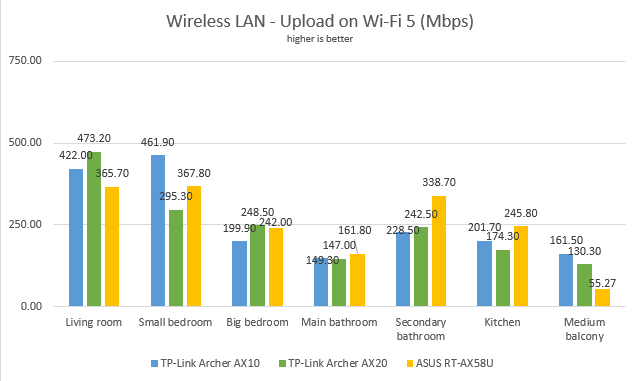
TP-Link Archer AX20 - Uploads when using Wi-Fi 5
When using the 5 GHz band and the Wi-Fi 5 standard, TP-Link Archer AX20 is a reliable router, which offers speeds that don’t disappoint.
We remained on the 5 GHz wireless band, but we switched to using the Wi-Fi 6 standard and ran SpeedTest in all the rooms of our apartment. The downloads offered by TP-Link Archer AX20 outmatched Archer AX10 almost everywhere.
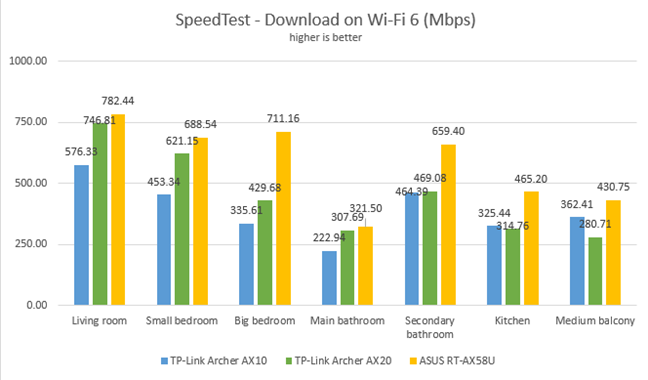
TP-Link Archer AX20 - Downloads in SpeedTest with Wi-Fi 6
The same was true when measuring the upload speed, but not in as many rooms.
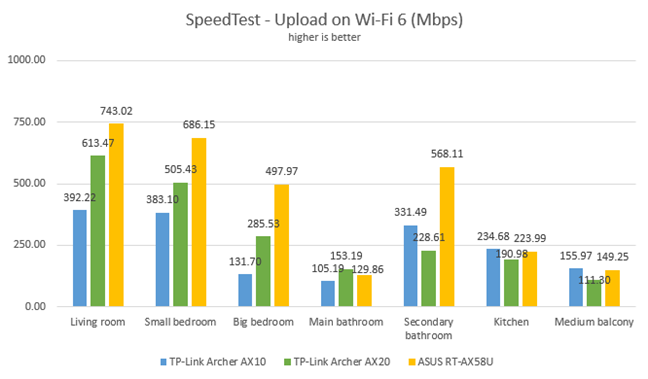
TP-Link Archer AX20 - Uploads in SpeedTest with Wi-Fi 6
For the last round of comparisons, we used the PassMark Performance test to transfer data between two computers connected to the network using Wi-Fi 6. TP-Link Archer AX20 performed well in all rooms, but it wasn’t the speed champion in this comparison.
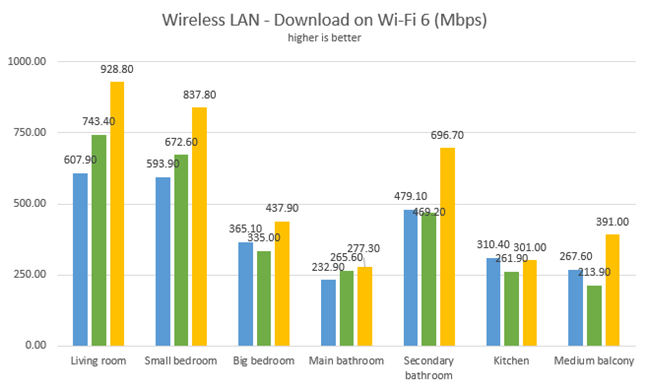
TP-Link Archer AX20 - Downloads when using Wi-Fi 5
The same happened when measuring uploads too.
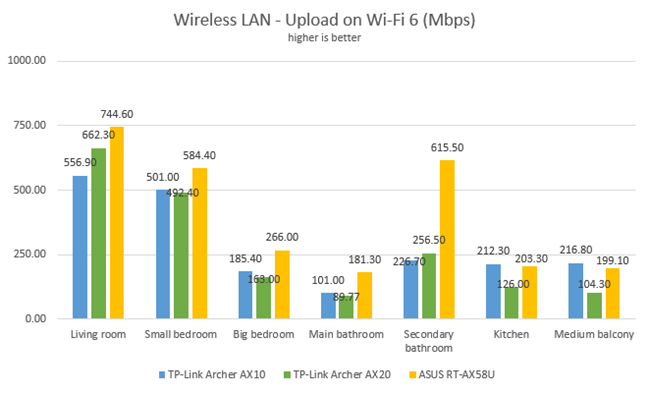
TP-Link Archer AX20 - Uploads when using Wi-Fi 6
When using Wi-Fi 6, TP-Link Archer AX20 performs well, but it doesn’t beat its competitors. However, its price is very affordable, making up for the difference in speed.
Wired network performance
TP-Link Archer AX20 has four Ethernet ports that you can use to connect your computers and devices to the network. Our internet connection offers a maximum of 1 Gbps for the download speed and 800 Mbps for the upload. We first used SpeedTest to see if this router can reach the maximum potential of our connection. As you can see below, TP-Link Archer AX20 had no problems doing that.
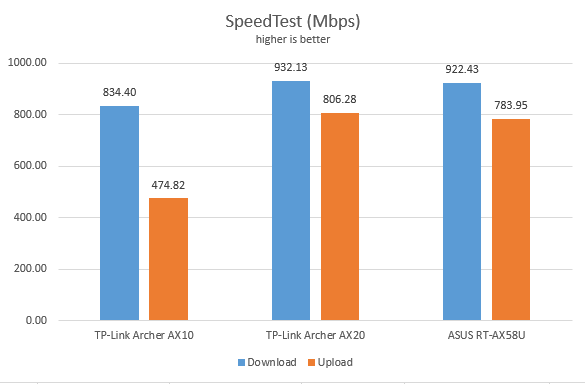
TP-Link Archer AX20 – SpeedTest on Ethernet connections
One thing to note is that TP-Link Archer AX10 offered a lower upload speed because, at the time we reviewed it, our internet connection was capped at 500 Mbps for the upload.
Then, we ran a network transfer between two computers using the PassMark Performance test. TP-Link Archer AX20 had no problems getting close to the 1 Gbps promised in its specifications.
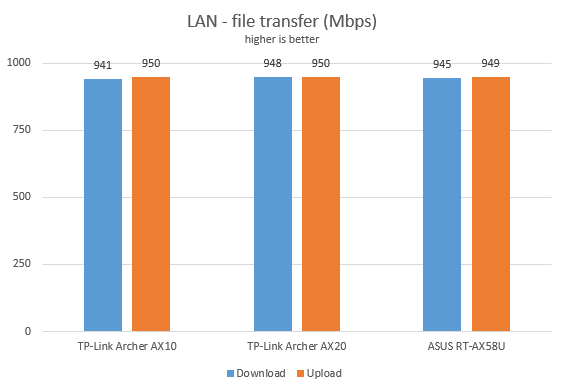
TP-Link Archer AX20 – Network transfers on Ethernet connections
TP-Link Archer AX20 can reliably work with internet connections that are up to 1 Gbps and also provides Ethernet transfers at this speed.
USB performance
We connected a portable SSD to the USB 2.0 port of the TP-Link Archer AX20 and made some data transfers. TP-Link Archer AX10 doesn’t have a USB port, so it is not part of this comparison. Also, ASUS RT-AX58U has a USB 3.0 port, which is natively faster, so TP-Link Archer AX20 couldn’t deliver similar performance, even though it was faster than many other routers with USB 2.0 ports, due to its powerful hardware.
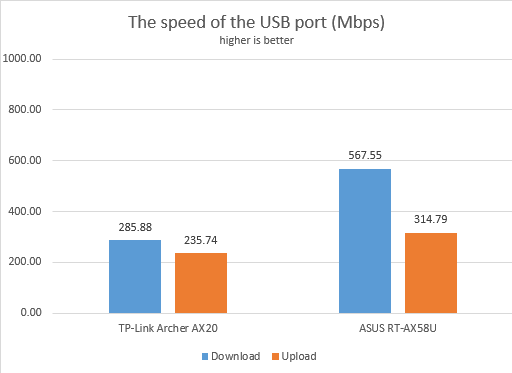
TP-Link Archer AX20 – The speed of the USB port
TP-Link Archer AX20 has a USB 2.0 port, which can be useful to some users. However, most Wi-Fi 6 routers these days come with faster USB 3.0 ports.
Extra features
The firmware on the TP-Link Archer AX20 has a couple of advanced features that some users are going to appreciate:
- VPN server – you can set the router to work as a VPN server using OpenVPN and PPTP.
- QoS – a basic Quality of Service feature that helps you control how the total bandwidth is split between devices.
- Parental Controls - a manual set of parental controls that you can use to set time limits for your children or block access to some sites.
- Wireless schedule - you can set when the wireless network is automatically turned off. For example, you may not want it broadcasted while you sleep.
- Guest Network – you can enable guest Wi-Fi networks with individual security and access settings, one on each band.
- DDNS – allows you to connect to the router from the internet, even if your internet provider assigns you a dynamic public IP address. TP-Link Archer AX20 can work with the following service providers: TP-Link, NO-IP, and DynDNS.
- IPv6 – support for IPv6 addresses that are going to replace IPv4. Our internet connection works with IPv6, and the router handled it well.
- Time Machine - if you have a Mac, you can use an external hard drive that’s connected to the router through its USB port, to backup your file using Time Machine.
- Integration with Amazon’s Alexa and IFTTT – with Tether mobile app’s help, you can integrate the router with Amazon Alexa and control it using voice commands. You can do the same with the If This Then That (IFTTT) service, which allows you to automate tasks that might otherwise be repetitive or unable to “talk to each other.”
- OneMesh - you can add a TP-Link range extender to create a mesh Wi-Fi network with your router for extended coverage and easy setup.
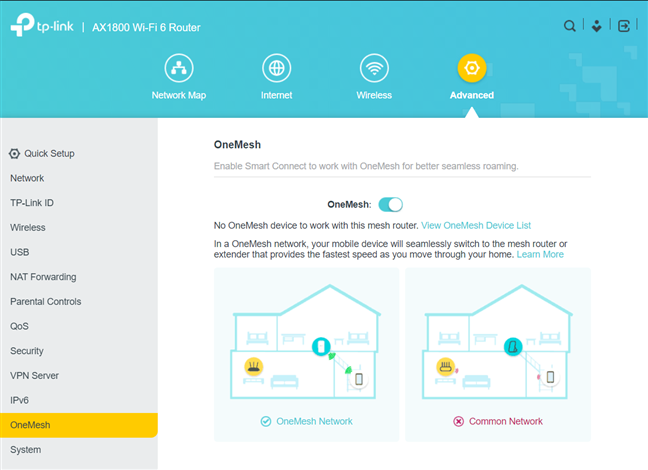
TP-Link OneMesh is available on the Archer AX20
The TP-Link Archer AX20 (AX1800) router with Wi-Fi 6 covers all the basics people need from a wireless router. Its OneMesh support may be handy when you need to extend the wireless coverage in your home.
What is your opinion about TP-Link Archer AX20?
Now you know what we like about the dual-band TP-Link Archer AX20 router with Wi-Fi 6. You also know its strengths and weaknesses. Before closing this review, tell us what you think. Are you interested in purchasing this router? If you already own it, what has been your experience with it? Comment below, and let’s discuss.


 15.02.2021
15.02.2021 
